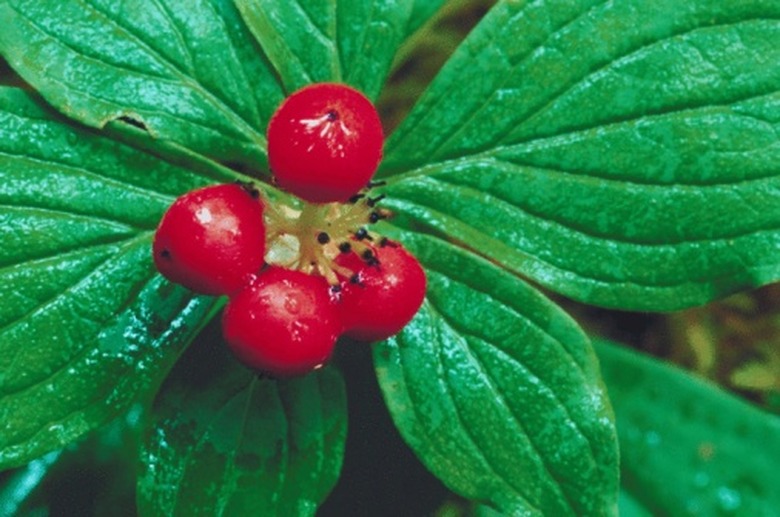When Do Huckleberries Ripen?
Wild huckleberries ripen from mid- to late summer. The berries primarily grow in the western United States with more than 12 species of huckleberries found in Oregon and Washington alone. You'll find the berries along trails and the roadside in many of the region's national forests.
Timing
Huckleberries start ripening in early July and continue through September, depending on the location. The berries ripen earlier at lower elevations. Scouting a few patches several weeks ahead of the supposed ripening time helps you know when the berries are ready.
Varieties
Large, sweet purple huckleberries come from the thin-leaved huckleberry plant. Thin-leaved huckleberries ripen from mid-August to mid-September. Red huckleberries mature earlier in the season from July into August.
- Wild huckleberries ripen from mid- to late summer.
- Red huckleberries mature earlier in the season from July into August.
Factors
The tasty little berries grow at elevations ranging up to 11,000 feet in height, although most of the berries grow near the 4,000 foot level. Some huckleberry patches, such as those found in Washington's Gifford Pinchot National Forest, ripen at different times each year. The exact ripening date depends on the snowmelt, late freezes and other unpredictable weather events.
Huckleberries Ready To Pick?
Huckleberry bushes are attractive enough to grow for their ornamental quality alone. They grow between 1 and 6 feet tall in almost any soil. Huckleberries are hardy in U.S. Department of Agriculture plant hardiness zones 7 through 9. The skin on the berry tears as you pull it from the bush, so they lose juice and rot quickly if you don't use or freeze them right away. Garden huckleberries (Solanum scabrum) are not related to true huckleberries. They were developed from the deadly nightshade plant and should be grown and harvested with caution. The berries turn dark black and the skin goes from shiny to dull when ripe. It takes an entire bush full of berries to produce enough for one pie. Many state and national forests and parks have regulations about harvesting berries. Ensure you are familiar with the plant and can tell the difference between huckleberries and other native plants, and be respectful of wild areas.
- The tasty little berries grow at elevations ranging up to 11,000 feet in height, although most of the berries grow near the 4,000 foot level.
- Some huckleberry patches, such as those found in Washington's Gifford Pinchot National Forest, ripen at different times each year.
References
- US Forest Service Gifford Pinchot National Forest: Summer Sun Brings Ripe Huckleberries to the Forest
- US Forest Service Gifford Pinchot National Forest:: Huckleberries
- Explore the Bitterroot: Montana Wild Huckleberry Season in the Bitterroot Mountains
- The Berry Book; Robert Hendrickson
- Northwest Berry & Grape: Harvesting and Processing Your Huckleberries
- University of Minnesota Extension: Garden Huckleberry
